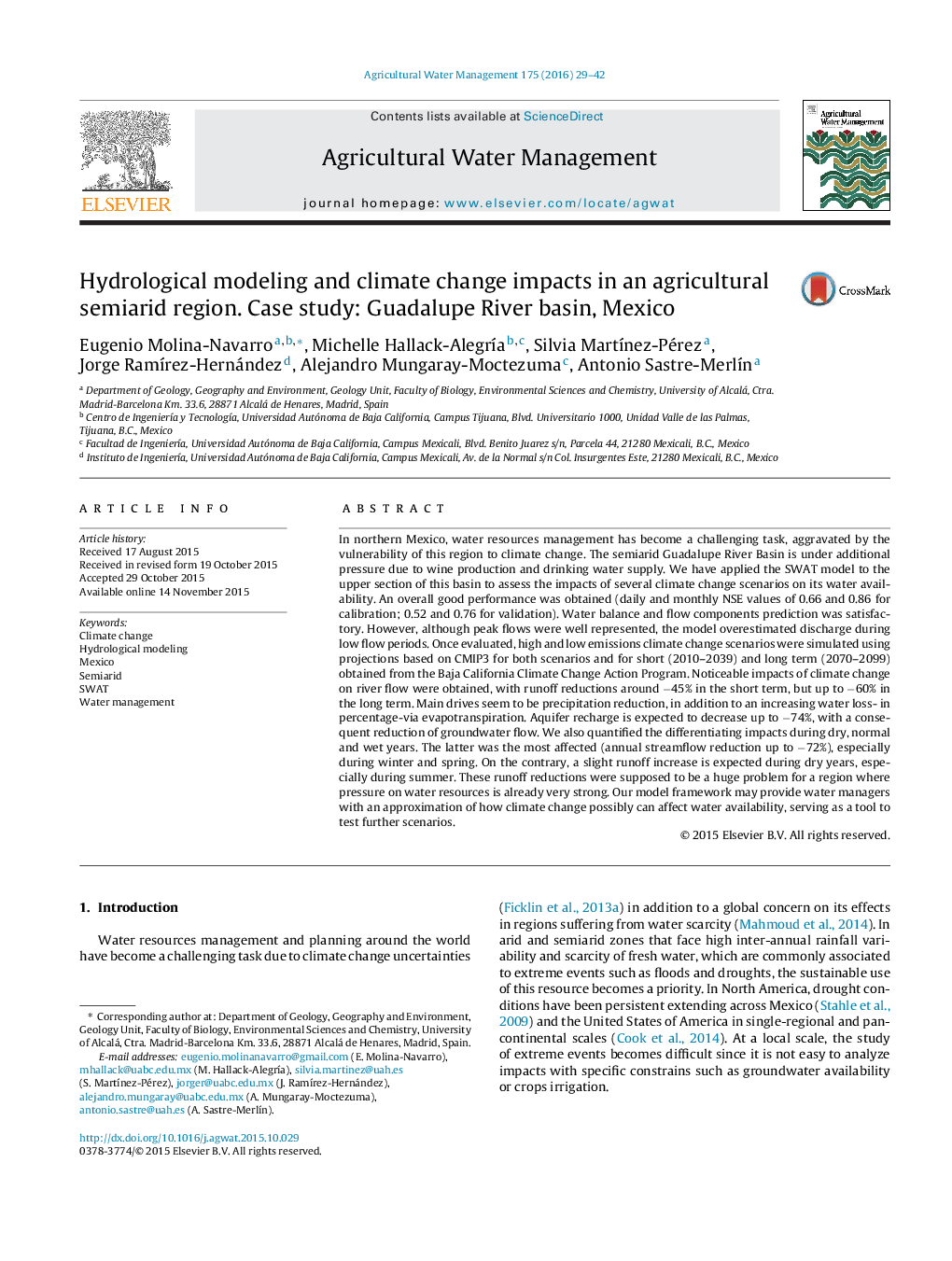| کد مقاله | کد نشریه | سال انتشار | مقاله انگلیسی | نسخه تمام متن |
|---|---|---|---|---|
| 4478264 | 1622905 | 2016 | 14 صفحه PDF | دانلود رایگان |
• We modeled the hydrology in an agricultural semiarid basin located in northwest Mexico.
• We checked for the potential effects of climate change on its water availability.
• Climate change will have a noticeable impact on river flow, decreasing up to −60%.
• The model also predicted a reduction of aquifer recharge up to −74%.
• Compared with dry and normal years, wet years will be the most affected.
In northern Mexico, water resources management has become a challenging task, aggravated by the vulnerability of this region to climate change. The semiarid Guadalupe River Basin is under additional pressure due to wine production and drinking water supply. We have applied the SWAT model to the upper section of this basin to assess the impacts of several climate change scenarios on its water availability. An overall good performance was obtained (daily and monthly NSE values of 0.66 and 0.86 for calibration; 0.52 and 0.76 for validation). Water balance and flow components prediction was satisfactory. However, although peak flows were well represented, the model overestimated discharge during low flow periods. Once evaluated, high and low emissions climate change scenarios were simulated using projections based on CMIP3 for both scenarios and for short (2010–2039) and long term (2070–2099) obtained from the Baja California Climate Change Action Program. Noticeable impacts of climate change on river flow were obtained, with runoff reductions around −45% in the short term, but up to −60% in the long term. Main drives seem to be precipitation reduction, in addition to an increasing water loss- in percentage-via evapotranspiration. Aquifer recharge is expected to decrease up to −74%, with a consequent reduction of groundwater flow. We also quantified the differentiating impacts during dry, normal and wet years. The latter was the most affected (annual streamflow reduction up to −72%), especially during winter and spring. On the contrary, a slight runoff increase is expected during dry years, especially during summer. These runoff reductions were supposed to be a huge problem for a region where pressure on water resources is already very strong. Our model framework may provide water managers with an approximation of how climate change possibly can affect water availability, serving as a tool to test further scenarios.
Figure optionsDownload as PowerPoint slide
Journal: Agricultural Water Management - Volume 175, September 2016, Pages 29–42
